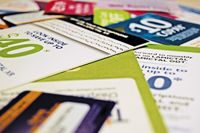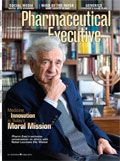Pharmacies are Our Friends
An underutilized sales resource, pharmacies and their staffs can help lead to improved scrip fulfillment and increased business
For many pharmaceutical sales forces, selling at the pharmacy level is something that is awkward and done infrequently at best. However, decision making that is exercised at pharmacies seems to be increasing along with a rapidly expanding generic market, more complex and authoritative managed care, and growing utilization of savings cards and free voucher programs. And while access to physicians seems to be declining nationally, there has never been a more significant time to capitalize on every opportunity to ensure the successful fulfillment of your products at the pharmacy level.

Justin McCarthy
There is a lack of familiarity that many sales reps experience at pharmacies, and this is largely due to the infrequency of these interactions. As a new rep, I quickly realized how uncomfortable these sales calls could be when I began to put local pharmacies into my route. A common scene that unfolded began with an annoyed cashier who would see my name tag, then roll their eyes at me and mumble, "Do you want to talk to the pharmacist?" And it often ended with a pharmacist dumping the savings cards or vouchers that I had just given him into an overcrowded drawer, never to be seen again.
After a few of these interactions, I quickly realized that my territory needed a more focused and effective plan if I was going to make any difference at all in positioning my products so that patients have the greatest chance of actually filling the scrip that I had previously worked so hard for. Therefore, I developed a strategy to determine exactly how much business is either lost or gained at the pharmacy level and what can be done about it. The following list is comprised of 10 essentials that can be implemented into any pharmacy selling strategy and can mean the difference between a hard-earned scrip being filled or going to a competitor at the pharmacy level.

Voucher cards go a long way if a rep takes the time to explain how easily they work.
Knowing the Players
Understanding who the employees are, and their responsibilities, is essential. Typically, the pharmacist is not the only person who can help or hurt your business. The pharmacist is primarily responsible for patient consults as well as checking and rechecking prescriptions for accuracy and potential drug-to-drug interactions. The pharmacy technician is responsible for filling the actual prescription and may perform cashier duties as well. The cashier receives the scrip from the patient or doctor's office, applies any free vouchers or discount cards, and takes payment from the patient.
Caring
After a few of the aforementioned interactions with pharmacies, it didn't take long for me to realize that, for the most part, they didn't really care about what I had to tell them. After all, I'm just some drug rep that wanders into their workplace infrequently and takes up the pharmacist's time. A great way for your selling team to show pharmacy employees that you care about their business is to get to know them. It's easy to be set apart as the only rep (or at least one of the very few) that takes time to do a product in-service in the pharmacy and provide lunch as a business courtesy (which is still permissible by current PhRMA guidelines). While product in-services may sometimes be underappreciated in doctors' offices, most pharmacies will jump at the chance to break their normal routine and learn about your products and programs over lunch. Being the only rep that knows the names of the pharmacy employees can make a big impact as well. This is a simple way to be more memorable and also to make it more likely that the pharmacy team will associate you with your product when they are filling it.
Product Education
Pharmacists and pharmacy technicians are experts at pharmacokinetics and pharmacodynamics, but making sure medicines are helping the patients get well or reach specific goals is the job of their doctor. Therefore, it's been my experience that pharmacy employees have been exposed to much less information about product efficacy than doctors have. Nearly every pharmacist I have shown trial data to has been surprised that there are any differences between my products and generics in the same class, and many other employees didn't realize that even though there are generics in the same class, there is no generic form of my products. Differentiating your product from the competition can give you the opportunity to explain why healthcare providers (HCPs) are prescribing your product instead of the others and how essential it is that the patient gets your product when prescribed.
Savings Cards/Voucher Education
There is often a great disconnect between the organizations that produce savings cards/vouchers and the pharmacies that actually apply them. Take the time to inform pharmacists which patients qualify for vouchers and which do not. This provides clarity and confidence when employees are filling one of your products and makes them more likely to proactively offer savings to the patient. If there is a phone activation required, I always call the number and activate a card myself so that I can tell the pharmacy employees what to expect if they need to assist a patient who is having trouble navigating an automated phone system.
Register Utilization
If a pharmacy has never used one of my savings cards/vouchers, I will often ask them to pull up an imaginary patient at the register and do a mock fill to see how the card would be correctly applied. I apply this same principal to free product vouchers. Cashiers can also give you valuable information about the cash price of your products as well as the products of your competitors.
Consistency
The majority of pharmaceutical reps spend very little time, if any, calling on pharmacies; thus the reason these interactions are often awkward. Putting pharmacies right into a sales route will quickly give you a competitive edge in each pharmacy, because they will be familiar and comfortable with you since you are the rep they see the most. Consistent messaging will also ensure that they make a connection between you and your products when they are filling them. This can mean the difference between a discount card or free voucher being applied or not.
Asking for the Business
Pharmacists and even pharmacy technicians can exercise a great deal of discretion when it comes to filling a prescription. In addition to having the authority to offer a generic version to the patient, they may also have to call a doctor's office and inform them that the prescribed product is not available (or too expensive) for the patient. There may be two or more options in the same class that are available to the patient, so ask for the business there. Once the appropriate relationships are in place, I always ask my pharmacy employees something such as, "If a patient cannot get product X, and my product is available to them, when you call the doctor's office will you inform them that my product is available to the patient?" The pharmacy or doctor's office may also be unwilling to complete a prior authorization for a competitor's product, so if your product does not require one, ask them to inform the doctor's office of this, too.
Knowing What's Important
Just like any of your other customers, it's important to know what matters to your pharmacies. For example, if their primary concern is keeping patients satisfied, then position your value cards/vouchers in a way that will ensure patients leave happy with the best medicines at the lowest possible price. If they are concerned with efficiency and going home on time, then re-enforce the great accessibility of your products without prior authorization.
Feedback and Success Stories
One of the best measures of the success of a comprehensive pharmacy sales program is direct feedback from the pharmacy employees themselves. A pharmacy tech can be a patient's hero by saving a patient several hundred dollars on a prescription. They will undoubtedly share these stories with you if you simply ask. Feedback may come from other sources as well. I have had physicians tell me that a pharmacist was boasting to them about the ease of one of my savings programs. Additionally, I've had other pharmaceutical reps tell me that they overheard a conversation in a pharmacy where one employee was educating another about the savings card for one of my products.
Advocacy
Choose at least one person in each pharmacy that can be an advocate for you and your products. Typically, this will be the person with whom you have the best rapport. It's unlikely that every employee will understand—or even care about—your products and the various programs associated with them. Having at least one person who fully understands and can champion your products and programs in your absence will make a huge difference. This person will likely educate the rest of the employees if you ask them to.
Pharmacies remain an underutilized resource for most pharmaceutical sales forces. Many veteran reps still find that interactions with pharmacists, pharmacy technicians, and cashiers seem unproductive and even awkward. Yet, in a market that is being bombarded by cheap generic options, pharmacies can exercise a great deal of authority in determining exactly what medication a patient receives and even how much they pay for it. Consider how your current sales approach could benefit from implementing a comprehensive pharmacy selling strategy that gives your team a competitive edge.
Justin McCarthy is a pharmaceutical sales specialist at AstraZeneca. He can be reached at justin@pobox.com

The Misinformation Maze: Navigating Public Health in the Digital Age
March 11th 2025Jennifer Butler, chief commercial officer of Pleio, discusses misinformation's threat to public health, where patients are turning for trustworthy health information, the industry's pivot to peer-to-patient strategies to educate patients, and more.
Navigating Distrust: Pharma in the Age of Social Media
February 18th 2025Ian Baer, Founder and CEO of Sooth, discusses how the growing distrust in social media will impact industry marketing strategies and the relationships between pharmaceutical companies and the patients they aim to serve. He also explains dark social, how to combat misinformation, closing the trust gap, and more.

.png&w=3840&q=75)

.png&w=3840&q=75)



.png&w=3840&q=75)



.png&w=3840&q=75)




















